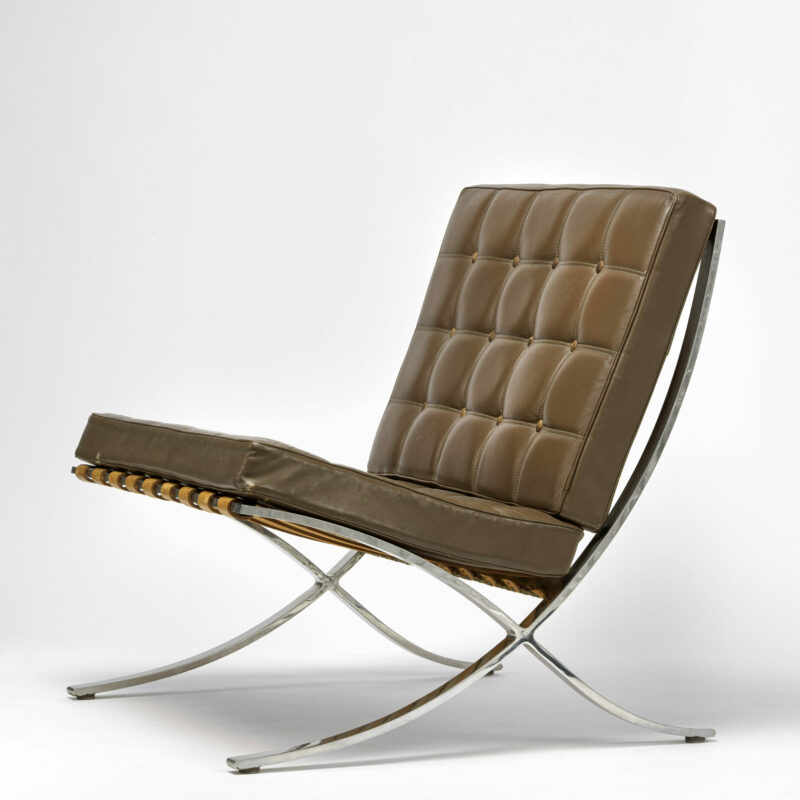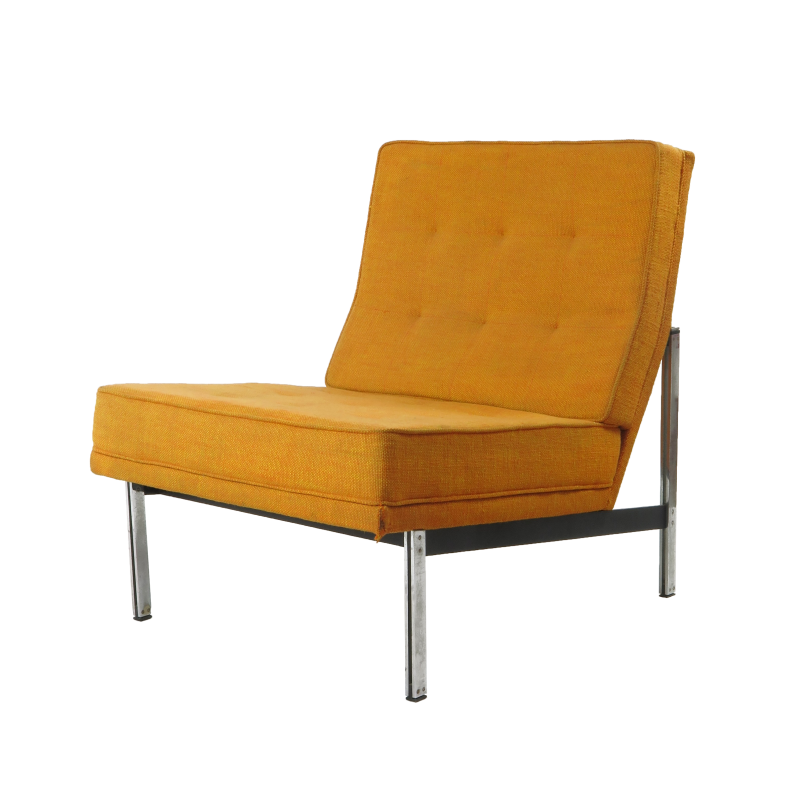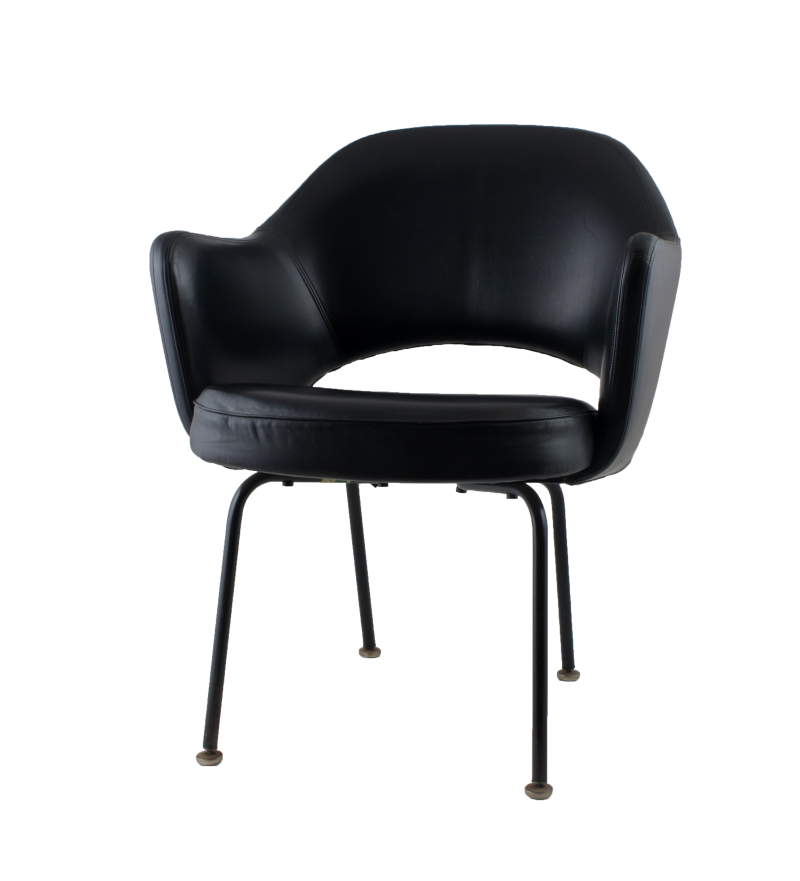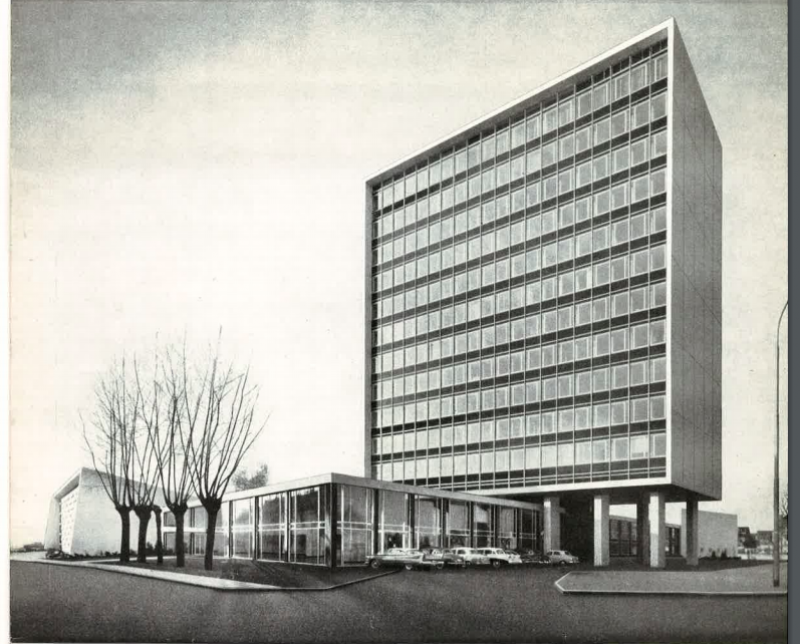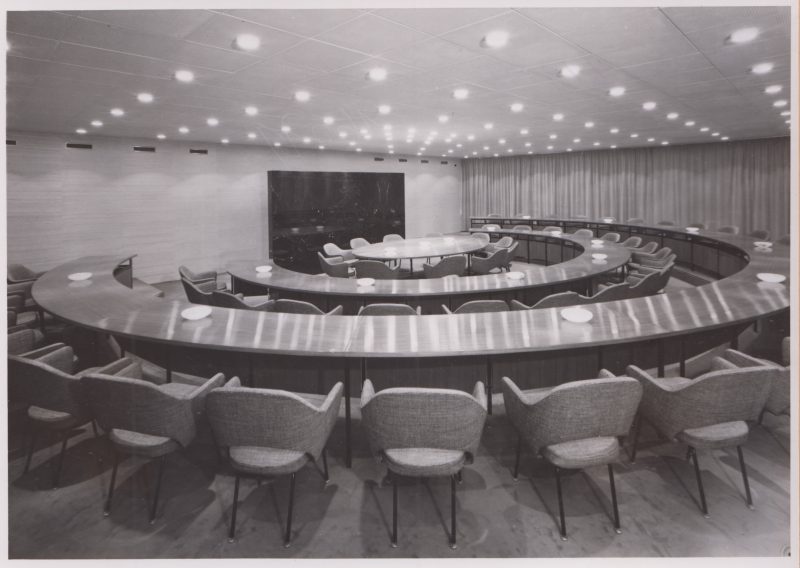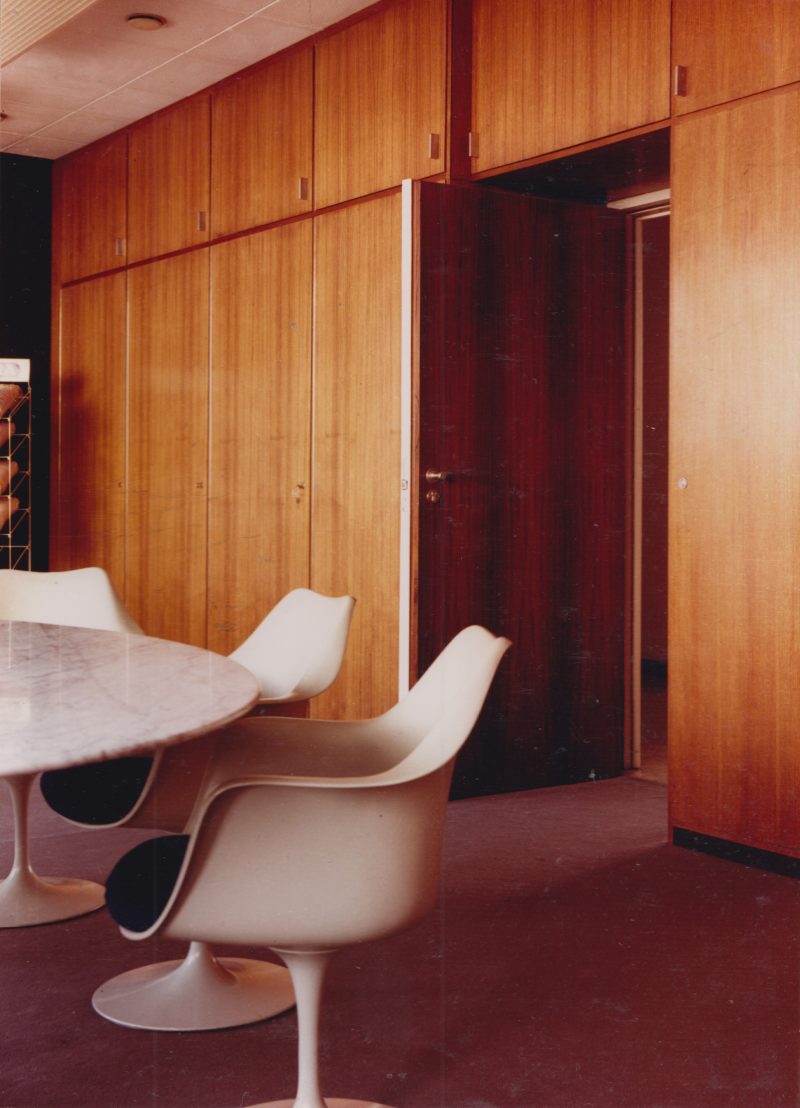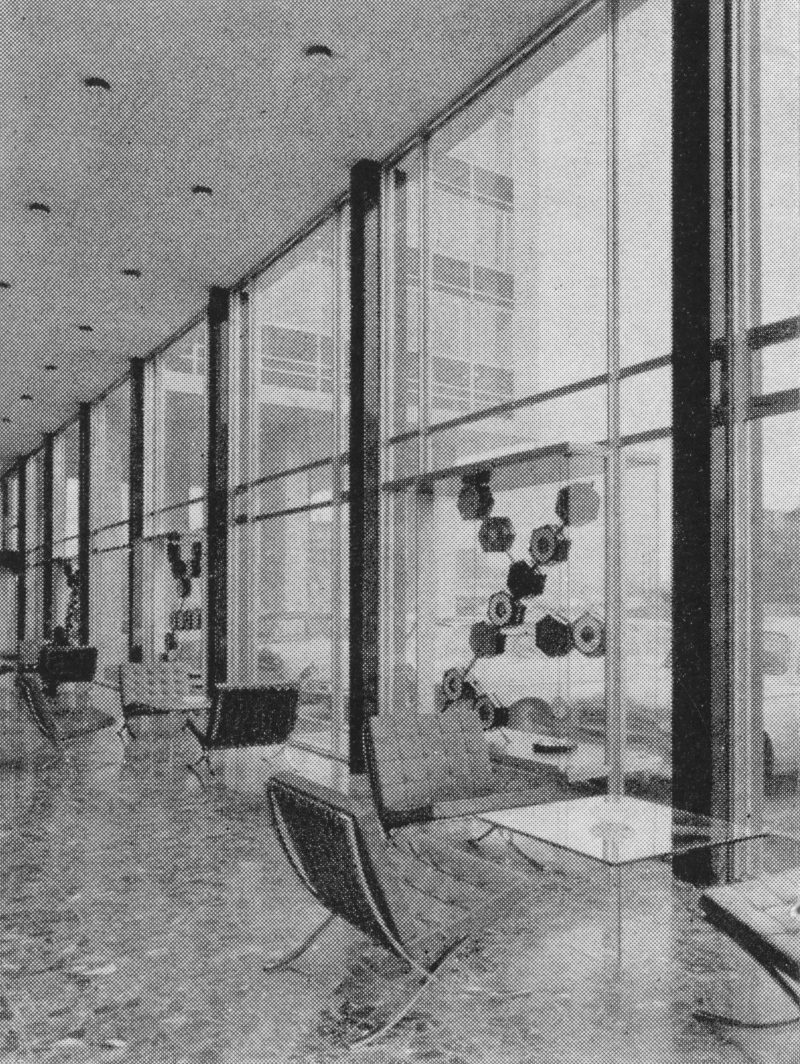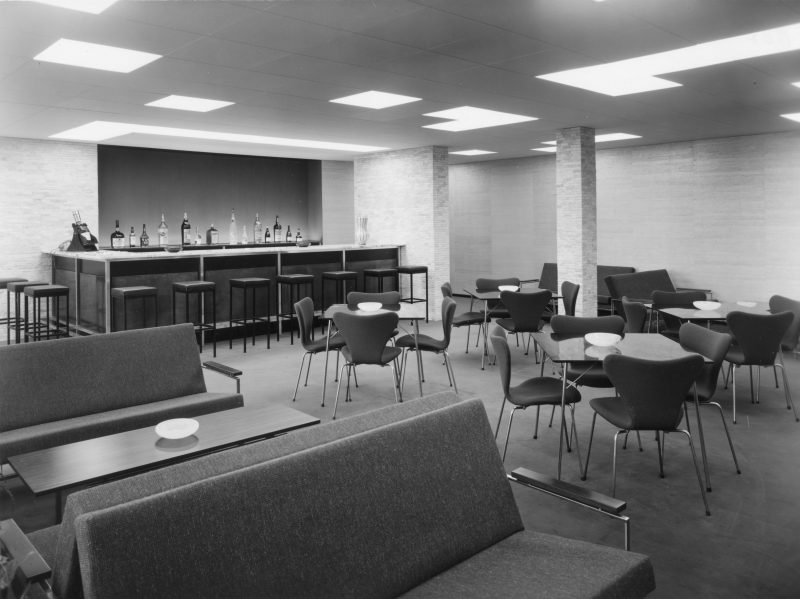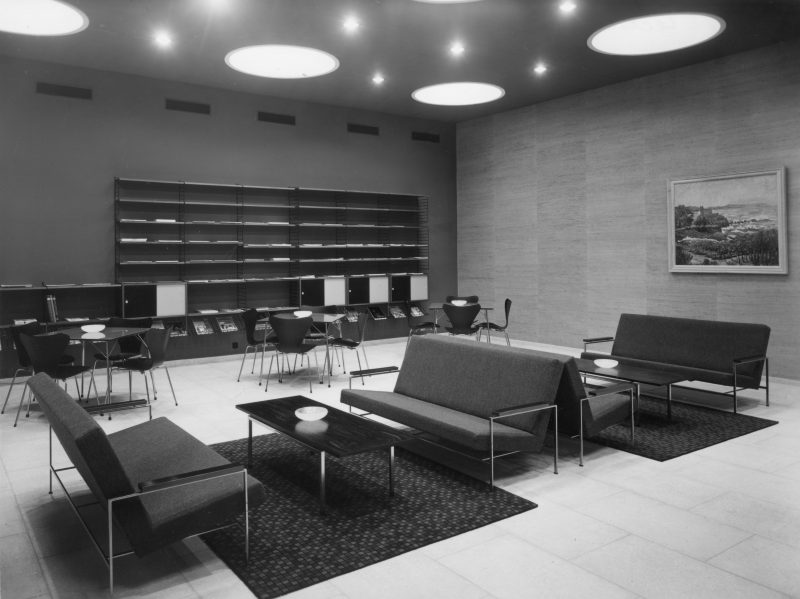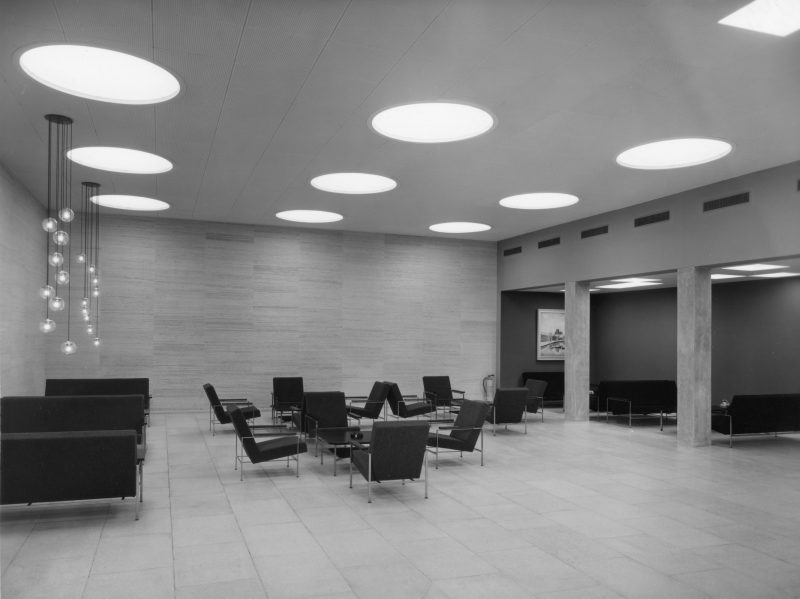On furniture and politics
Knoll International in the UCO building in Ghent
Fredie Floré and Nico Deswaef, KU Leuven, Faculty of Architecture
The talented American designer Florence Knoll (née Schust, 1917-2019) died in January this year. She was the wife and business partner of Hans Knoll (1914-1955), who founded the famous Knoll furniture company in 1938. Florence Knoll created the furniture brand’s signature style, designing a comprehensive furniture range from the early 1940s to 1960, as well as a series of unique showrooms in many cities around the world. She also established and managed the Knoll Planning Unit. This design studio had a major impact on the look and feel of post-war corporate offices, both in the United States and abroad.
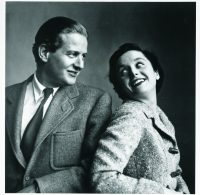
Hans and Florence Knoll © Knoll
Knoll’s impressive international expansion in such a short time was largely due to Hans Knoll’s close ties with the American government. Knoll International, as the international subsidiaries were known, directly benefited from the post-war European reconstruction programme and the context of the Cold War. As a superpower, the United States focused on establishing a presence in the Western bloc, with travelling exhibitions about American design, which were organised with government support. Moreover, Hans Knoll received a large government contract to produce furniture for the homes of American employees in Europe. Thanks to this contract, he was able to open the first transatlantic branches of Knoll International in Stuttgart and Paris in 1951.
The story of Knoll’s representation in Belgium is also politically-charged. In 1954, the Kortrijkse Kunstwerkstede Gebroeders De Coene acquired the licences for the production and sale of Knoll furniture in the Low Countries. During the inter-war period, De Coene was a widely-respected Flemish furniture company. After World War II, however, the management was incriminated for economic collaboration and the company was placed under state supervision. When the family re-acquired the company in the 1950s, the new CEO Pol Provost (1907-1990) immediately set about investing in its modernisation. The purchase of the Knoll licenses was just one aspect of his strategy, helping the company to become a major player on the Belgian furniture landscape. The Knoll International Brussels showroom was located on rue Royale. Knoll furniture was also widely exhibited, including in the travelling exhibition American design for home and decorative use, which was on show in the Kursaal Casino in Ostend in 1954. That same year, the Ghent Museum voor Sierkunst also hosted the exhibition, where it was titled Industrial Design in the U.S.A.
Thanks to De Coene’s efforts, Knoll furniture soon became a popular choice in the world of architecture, in particular in the fast-growing market for corporate office buildings in Belgium. The new administrative centre of a textile company called Union Cotonnière in Ledeberg is just one example. This stunning modernist design by German architect Theodor Kelter (1907-1982) consisted of a rhythmic combination of horizontal and vertical building volumes, which accommodated a diverse programme . When the Union Cotonnière moved in in 1959, the buildings hosted the administrative, research, sales and marketing departments, as well as various showrooms, meeting rooms, a restaurant, a bar and a library.
The construction of this administrative centre was a prestigious project, and a clear demonstration of Union Cotonnière’s international ambitions. The straightforward functional but expensive interiors and interior elements by Brussels-based interior design firms Ateliers Stéphane Jasinski (1907-2000) and l'Art Décoratif Céline Dangotte (1883-1975), together with Knoll International, served only to emphasise this. The international references were especially apparent in the boardroom’s design. The concentric arrangement of the furniture was remarkably similar to that in one of the halls in the new UNESCO headquarters in Paris, which caused quite a stir. The architectural journal La Maison was quick to point out the similarities at the time.
Nowadays the original buildings near Zuiderpoort are hardly recognizable. Various additions and renovations have eroded the design’s original rhythm and balance. It was stripped of its prestigious interior at the end of the 1980s, when Union Cotonnière moved out. Fortunately the historical value of some of the furniture design was appreciated by some. In 1989 and 1992, UCO’s board donated various Knoll pieces to Design Museum Gent, including sofas and armchairs designed by Florence Knoll, a Barcelona Chair by Ludwig Mies van der Rohe and a Model 71 chair by Eero Saarinen. Today this furniture bears silent witness to ambitious entrepreneurship and the sometimes-powerful alliances between furniture design and politics.
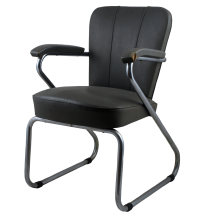
Tubular chair related to the Dutch company Gispen
Other items from the collection of the UCO building were donated along with the Knoll furniture: a table by the Danish designer Grete Jalk; two tubular chairs that are similar to the chairs of the Dutch producer Gispen; the String wall unit, which was designed in 1949 by the Swedish couple Karin and Nils Strinning and which was used in the library; and two Butterfly Chairs by Arne Jacobsen.
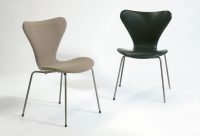
Butterfly, Arne Jacobsen. Photo Studio Claerhout © Design Museum Gent

Fredie Floré is associate professor in Interior Architecture and has extensive expertise in post-war design in Belgium. She has conducted research into the post-war history of De Coene and the transatlantic production of Knoll International. She is the co-founder of the Architecture, Interiority, Inhabitation research group (www.a2i-kuleuven.be). Nico Deswaef has a Master’s in Heritage Studies. He currently works on a PhD project on office interiors in post-war Belgium titled ‘Corporate Office Interiors in Post-war Belgium: a Genealogy of a Modern Sociotope’.
You can find out more about Knoll’s international history and the links between furniture design and politics in The Politics of Furniture. Identity, Diplomacy and Persuasion in Post-War Interiors (Routledge, 2017, editors Fredie Floré and Cammie McAtee).
